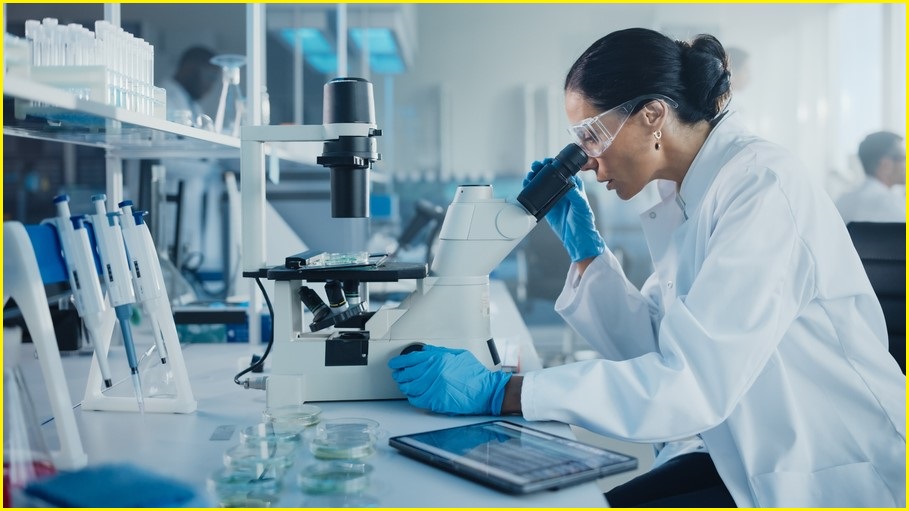A novel lithium-ion battery design could power electric vehicles, smartphones and other devices with up to 70 per cent less lithium as current designs – and it’s just one of millions of new battery materials invented and tested by fast-developing generative AI (genAI) models.
Based around a newly discovered electrolyte called N2116, the new battery design – a solid-state material that charges faster than existing batteries and is less likely to explode – replaces much of the battery’s lithium with sodium, which is significantly cheaper and easier to source.
N2116 was one of 32 million candidate molecules developed and modelled within a Microsoft cloud platform called Azure Quantum Elements, which has empowered a multi-year partnership with Washington-based Pacific Northwest National Laboratory (PNNL) that will now see the two companies working to test and refine batteries based on the new material.
Even more important than the new electrolyte, however, is the way that use of the AI-based technology enabled scientists to develop it at breakneck pace, noted Azure Quantum Elements product leader Nathan Baker.
“At every step of the simulation where I [previously] had to run a quantum chemistry calculation, instead I’m calling the machine learning model,” Baker explained. “So I still get the insight and the detailed observations that come from running the simulation, but the simulation can be up to half a million times faster.”
Last August, the teams published the results of their initial work with Elements, which was trained on millions of chemistry and materials science data points and then asked to develop and mathematically test combinations of chemicals that could improve on existing lithium-ion batteries.
Elements originally whittled the AI’s original pool of 32 million suggested candidates down to 500,000 that were predicted to be chemically stable, then further narrowed the search to 800 materials based on functional properties relevant to the design of novel batteries.
Those candidates were analysed using high-performance computing (HPC) system – which crunched massive data models to calculate each material’s energy and simulate the movement of molecules through the material, cutting the field to 150.
These candidates were then evaluated by humans, who weighed potential issues such as their difference from existing materials, mechanical function, and availability of constituent elements.
Out of 23 final candidates, PNNL researchers found that five already existed and that N2116, the most promising of the remaining 18, could be realistically manufactured and used in next-generation batteries – which PNNL scientists have subsequently done.
Reinventing complex research methods
Conceptualising, testing, and designing novel battery chemistry normally takes years: battery specialist Sila, for one, spent ten years of R&D to test 55,000 iterations before finalising a specialised battery that it will begin manufacturing at scale later this year.
And while US research centre Argonne last year debuted a battery design with four times the energy density of lithium energy – meaning it could potentially power an EV for 1,600km per charge and eventually be used to power electric planes and B-doubles – that human-driven work took a decade.
By contrast, the Microsoft-PNNL team was able to use the GenAI model to come up with 32 million new molecules – and methodically analyse them to build a shortlist of 18 candidates in just 80 hours.
“We recognised early on that the magic here is in the speed of AI assisting in the identification of promising materials,” PNNL chief digital officer Brian Abrahamson said, “and our ability to immediately put those ideas into action in the laboratory… We plan to push the boundaries of what’s possible through the fusion of cutting-edge technology and scientific expertise.”
Similar efforts are rapidly changing the state of the art in battery design, which has embraced AI as a tool for inventing new battery chemistry with established research giants like IBM Research rubbing elbows with academic researchers and startups like Chemix and Aionics.
Carnegie Mellon University’s Dragonfly model has standardised the process of AI-driven battery development, while the likes of the US National Renewable Energy Laboratory (NREL), General Motors have also joined the rush to use AI to find the next game-changing battery material.
Their work is paying off: last year, for example, a seven-year research project led by Stanford University researcher Austin Sendek validated of the efficacy of a new battery electrolyte, called LBS, that was developed and tested in silico using AI algorithms.
Google, for its part, recently shared its success using an AI model called GNoME to invent and rapidly evaluate 2.2 million new materials with potential application as superconductors, supercomputers, and battery science.
“It is the combination of scientific expertise and AI that will compress the next 250 years of chemistry and materials science innovation,” Baker said, “transforming every industry and ultimately unlocking a new era for scientific discovery.”










